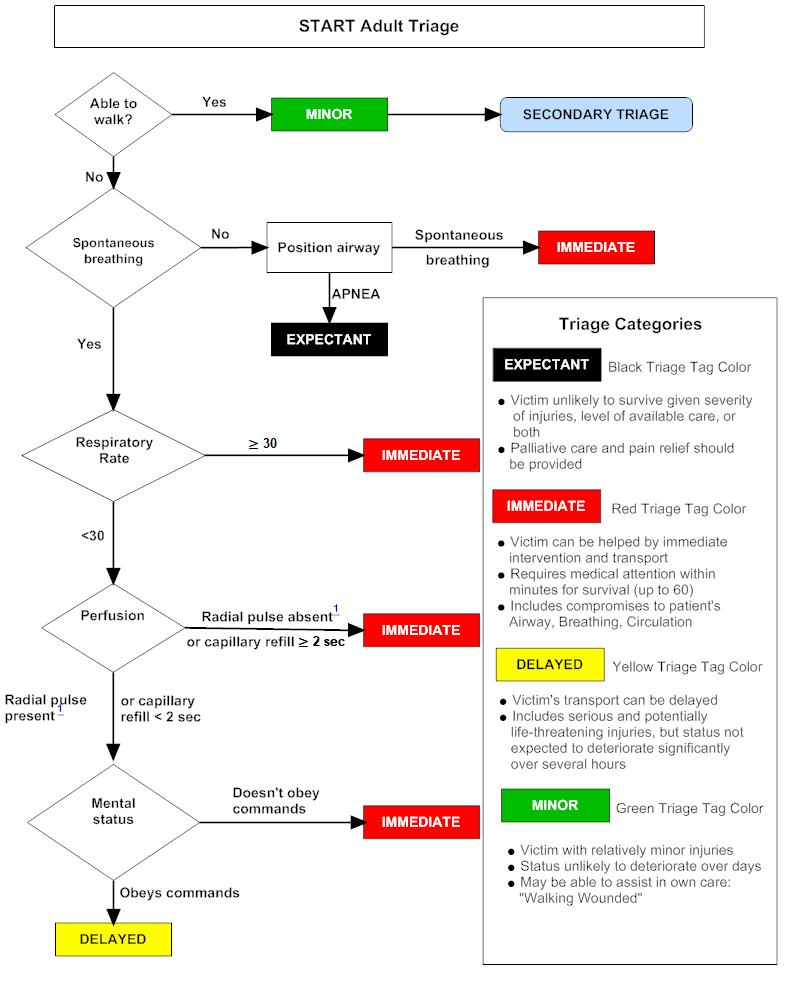START Triage (Adults)
Triage Tag
| Triage Tag | Explanation |
|---|---|
Expectant |
Victim is deceased or is not expected to survive due to the severity of their injuries. |
Immediate |
Victim has severe injuries requiring immediate treatment. |
Delayed |
Victim has potentially severe injuries, but treatment can be delayed up to a few hours. |
Minor |
Victim has minor injuries not requiring immediate treatment. |
The primary goal of this question is to separate patients that can walk (“walking wounded”) from those who cannot. Patients that can walk are likely not at risk of immediate death. Do not force any patients to walk. Have ambulatory patients walk to a designated area, clearing space for responders to access more critical patients.

See a visual diagram of the START Triage algorithm.
Go to Flowchart
References
- Benson, M., Koenig, K. L., & Schultz, C. H. (1996). Disaster triage: START, then SAVE -- a new method of dynamic triage for victims of a catastrophic earthquake. Prehospital and Disaster Medicine, 11(2), 117–124. https://doi.org/10.1017/s1049023x0004276x
- Community Emergency Response Team. (2005, August 12). START - Simple Triage and Rapid Treatment. Los Angeles Fire Department Disaster Preparedness Section. Retrieved from https://www.cert-la.com/downloads/education/english/start.pdf
- US Department of Health & Human Services. (2022, November 16). START Adult Triage Algorithm. Chemical Hazards Emergency Medical Management. Retrieved from https://chemm.hhs.gov/startadult.htm